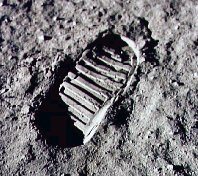
If some sort of armageddon should visit itself upon us in the future and wipe out mankind, what evidence of our existence would we leave?
If aliens were to visit our solar system in one million years time, what evidence would they find that mankind had ever existed. Surely our cities, bridges, monuments, churches, temples and great feats of structural engineering would leave a lasting legacy to our presence on our home planet, or maybe not.
 Post end-of-civilisation the forces of nature would soon set to work.
Storms, floods, earthquakes, hurricanes and volcanic eruptions would destroy some of mankinds work but over thousands of years the steady changes of temperature, wind and rain would in the long term crack, corrode, erode and break much of our hard work.
Post end-of-civilisation the forces of nature would soon set to work.
Storms, floods, earthquakes, hurricanes and volcanic eruptions would destroy some of mankinds work but over thousands of years the steady changes of temperature, wind and rain would in the long term crack, corrode, erode and break much of our hard work.
 Where water is ample, vegetation, forests and rainforests would gradually over-run our concrete jungles. Where there is no water, desert sands would bury cities.
Quite probably in one million years time, alien visitors would find virtually no trace of us at all...well not quite.
Where water is ample, vegetation, forests and rainforests would gradually over-run our concrete jungles. Where there is no water, desert sands would bury cities.
Quite probably in one million years time, alien visitors would find virtually no trace of us at all...well not quite. If they explored slightly further afield they might find twelve sets of footprints and a few remnants of man's first tentative steps into space.
If they explored slightly further afield they might find twelve sets of footprints and a few remnants of man's first tentative steps into space.The moon has no atmosphere and no winds. Only the very occasional meteorite disturbs the moon's surface so it is likely that the footprints of the twelve Apollo astronauts who travelled to the moon will remain virtually intact for millions of years.
 In 1972 the exploration probe Pioneer 10 was launched to investigate Jupiter. After passing Jupiter it was sent out to pass by the icy world of Pluto, furthest of the planets from the sun. It then travelled out of our solar system. It is now roughly 14 billion km from earth and will continue to glide serenely through space on its way toward the star Aldebaran. This journey will take about two million years but even this is not the end. Pioneer 10 together with three other probes that have been sent out into deep space will drift silently among the stars almost forever. Billions of years after the destruction of our solar system Pioneer 10 will still be travelling and on its side a plaque that describes the creatures that built it and sent it on its way.
In 1972 the exploration probe Pioneer 10 was launched to investigate Jupiter. After passing Jupiter it was sent out to pass by the icy world of Pluto, furthest of the planets from the sun. It then travelled out of our solar system. It is now roughly 14 billion km from earth and will continue to glide serenely through space on its way toward the star Aldebaran. This journey will take about two million years but even this is not the end. Pioneer 10 together with three other probes that have been sent out into deep space will drift silently among the stars almost forever. Billions of years after the destruction of our solar system Pioneer 10 will still be travelling and on its side a plaque that describes the creatures that built it and sent it on its way.
